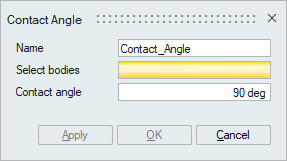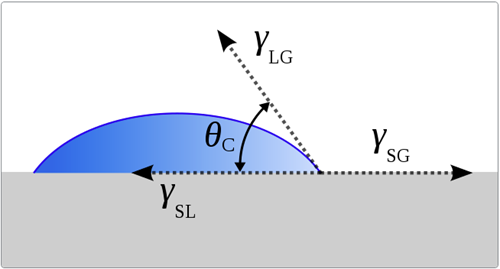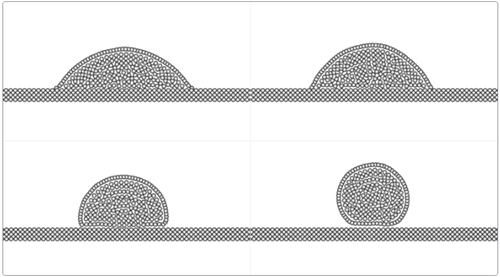Contact Angle
![]()
The contact angle is a single value prescribed as a solid surface/boundary property. It is measured as the angle between solid and fluid surfaces with respect to the fluid phase. Enabling the contact angle parameter allows the simulation of different wetting behaviors in single-phase flows (the only type of flows the model is currently recommended for). The default wetting behavior on walls for the TARTAKOVSKY2016_F1 surface tension model is neutral with a static contact angle of 90 degrees.

Description

An angle of less than 90 degrees develops hydrophilic behavior and an angle greater than 90 degrees develops hydrophobic behavior.

The above image illustrates this with a droplet on a flat surface with contact angles of 30, 60, 90, and 120 degrees.

The above image contains isometric, plan, and elevation views of three droplets with equal volume. From left to right the droplets are assigned contact angles of 30, 90, and 120 degrees. This illustrates that contact angle affects the particle spread and distance from the wall.
Wetting behavior is highly sensitive to numerical (particles aligned on a Cartesian grid) and experimental (surface type and cleanness) setups. This parameter should not be interpreted as a precise parameter down to a single degree, but rather an estimate of the wetting behavior in general (wetting/non-wetting to certain degrees).